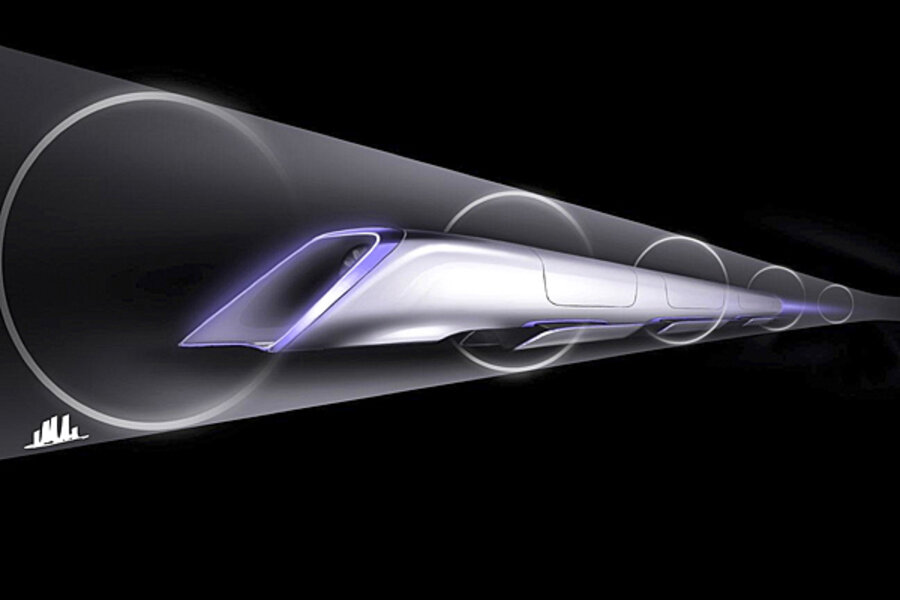Hyperloop: Elon Musk imagines a tubular future of travel
Loading...
"I've got a hyperloop to catch."
That's a phrase you might hear sometime in the future, if you believe Elon Musk. The driving force behind Tesla Motors' luxury electric car and SpaceX's forays into private space travel is throwing his weight behind a "fifth mode of transport." The hyperloop, as he laid out in plans late Monday, would whisk travelers in pods at about the speed of sound through tubes to reach their destinations.
It's not an entirely new idea, and Mr. Musk stresses that his plan is "extremely speculative." But if executed exactly as he envisions it, the hyperloop would offer a combination of high speed, low cost, and low emissions that would make planes, trains, automobiles, and boats look positively Stone Age.
"Short of figuring out real teleportation, which would of course be awesome (someone please do this)," Musk wrote in a 57-page proposal, "the only option for super fast travel is to build a tube over or under the ground that contains a special environment."
The basic concept is "a cross between a Concord and a rail gun and an air hockey table," as Musk described it at a conference in May. Columns of air would push passenger cars through special, low-pressure tubes at speeds greater than 600 mph. To reduce friction, the cars would levitate on a cushion of pressurized air.
Solar panels would run along the top of tube to provide power, Musk writes, and excess energy would be stored in battery packs for operation at night and in cloudy weather. That means the hyperloop "can generate far in excess of the energy needed to operate." That would have dramatic consequences for a transportation sector that is second only to electric power in total US energy consumption.
The system would be ideal for cities separated by 900 miles, Musk wrote in his plan, and could transport someone from San Francisco to Los Angeles in about a half hour. The total cost of a hyperloop between those two cities would be under $6 billion, Musk projects, and would cost passengers about $20 for a ticket to ride.
If plausible, the hyperloop would be a safer, faster, and cheaper alternative to the $68 billion high-speed rail system scheduled to begin running between those cities in 2028. Musk has been critical of that venture, saying he was "disappointed" by the logistical details of high-speed rail in the US.
"How could it be that the home of Silicon Valley and JPL – doing incredible things like indexing all the world’s knowledge and putting rovers on Mars – would build a bullet train that is both one of the most expensive per mile and one of the slowest in the world?" Musk wrote in his plan. "If we are to make a massive investment in a new transportation system, then the return should by rights be equally massive."
Musk is no stranger to big, bold ideas. His efforts to revolutionize online payments, private space travel, clean-energy financing, and electric vehicles have often drawn ridicule and scorn, but the billionaire entrepreneur often surprises his critics. It would take a modern-day da Vinci to invent a new form of mass transit, and Musk appears up to the challenge.
But he says he has enough on his plate already and hopes others will take up the challenge to create next-generation transportation.
”You want the future to be better than the past," Musk said last week in a Google hangout, "or at least I do, quite a bit.”






